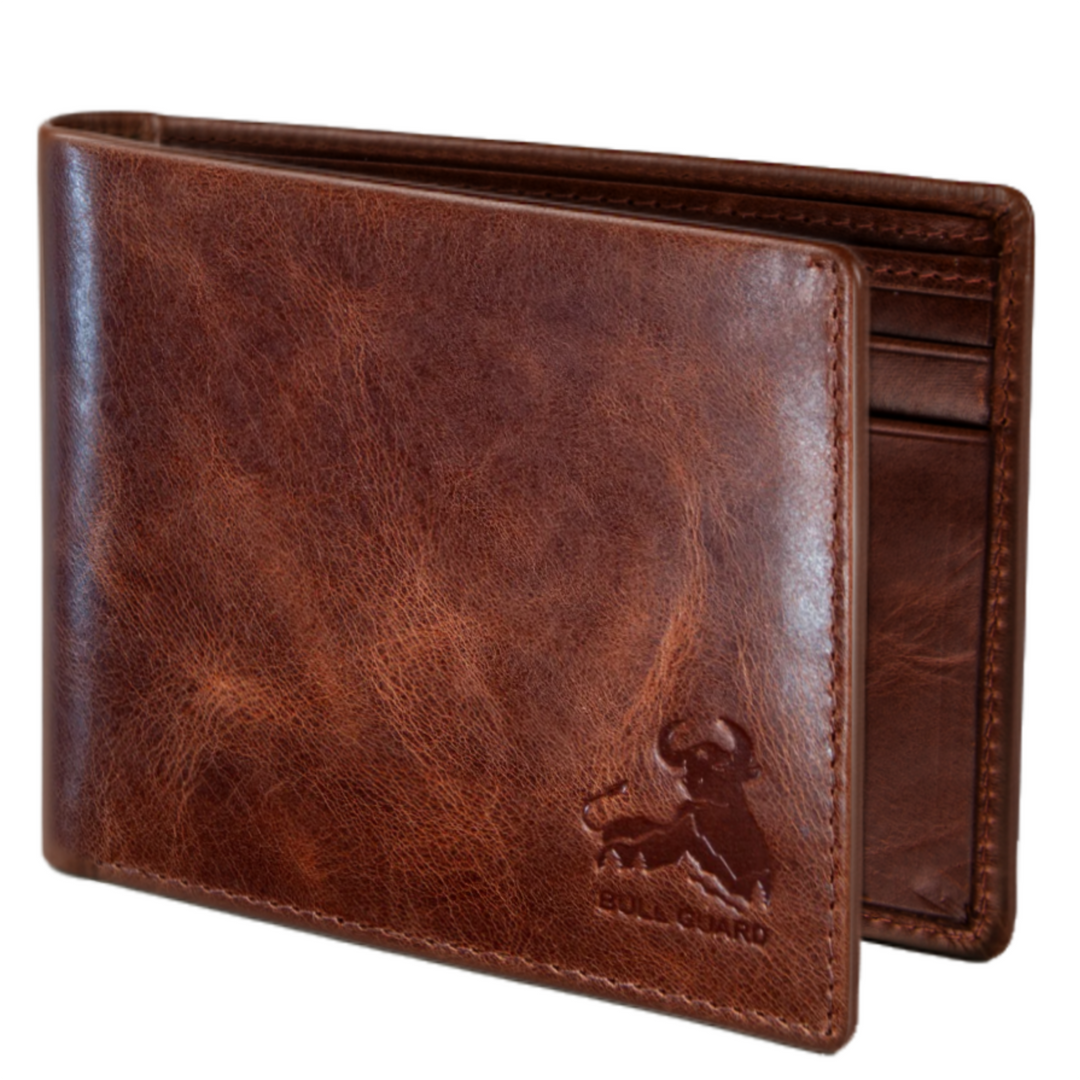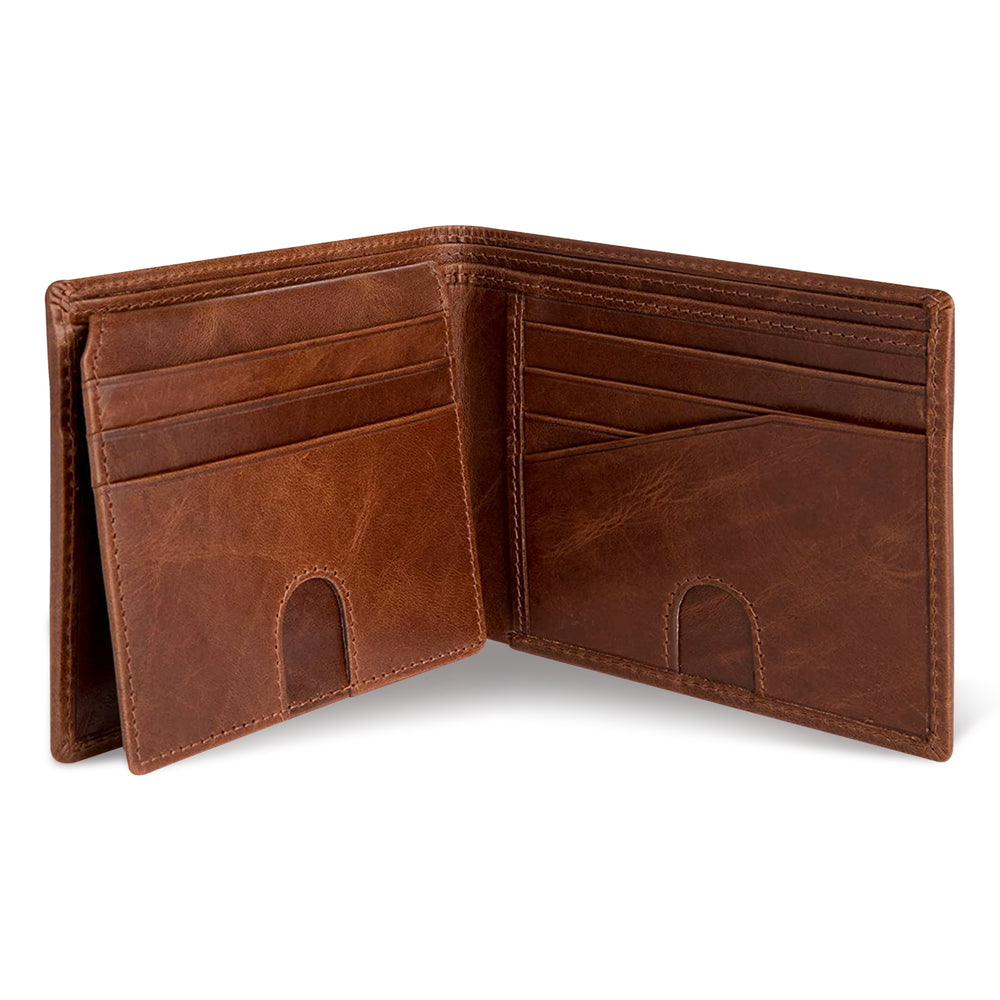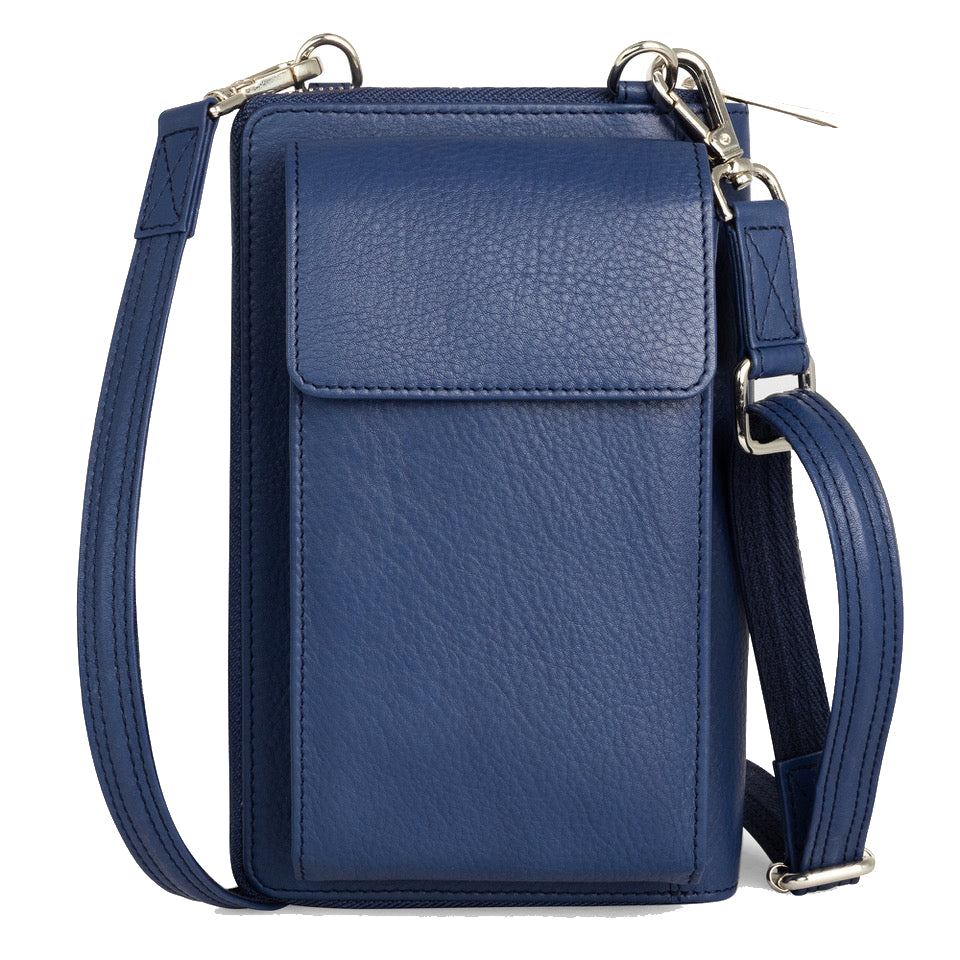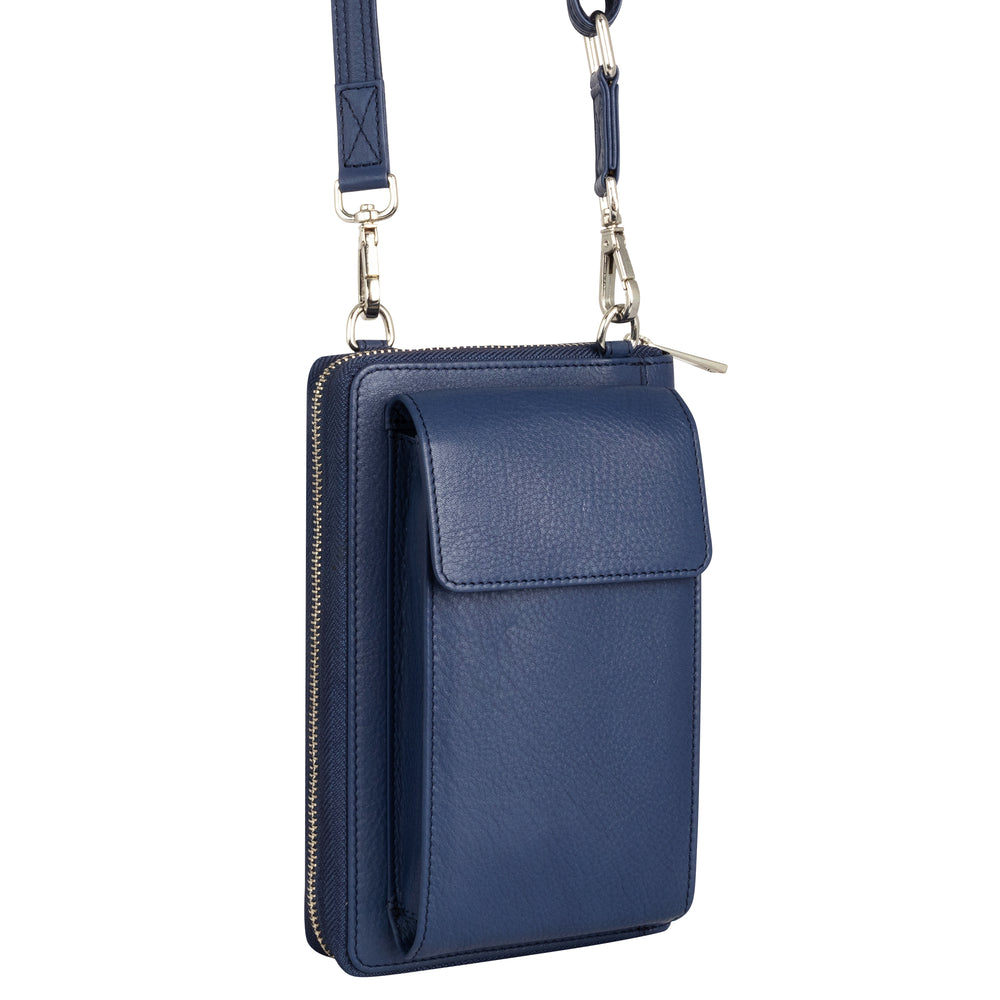Key Takeaways
- Losing a wallet is often felt as losing a trusted companion rather than just misplacing money or cards.
- A wallet carries personal stories and represents one's freedom and confidence in daily life.
- The emotional impact of losing a wallet goes beyond its physical contents.
- Many people experience a deep sense of loss and vulnerability when their wallet goes missing.
Table of Contents
- When a Wallet Isn't Just Lost, It's a Companion Missing
- Understanding Wallet Loss, Risks, Contents, and Real Impact
- Retracing Your Steps, Proven Recovery Strategies
- Immediate Financial Protection, Locking Cards and Minimizing Damage
- Replacing Lost IDs, Keys, and Critical Documents
- Identity Protection After Wallet Loss, Preventing and Responding to Fraud
- Modern Tracking Technology, Using Tech to Find Lost Wallets
- Home vs Public Loss, Tailored Search Strategies
- Managing Daily Life Without Your Wallet, Temporary Solutions
- Prevention & Preparation, How to Minimize the Impact of Future Loss
- Bull Guard Wallets, Built for Resilience and Real Life Losses
- Emotional Recovery, Rebuilding Confidence After Loss
- Long-Term Impact, Lessons from Wallet Loss
When a Wallet Isn't Just Lost, It's a Companion Missing
I'm Marcela, and I've watched countless customers describe the moment they realize they lose a wallet, it's never just about the money or cards. It's the sinking feeling that a trusted companion, shaped by daily adventures and softened by countless journeys, has vanished. Your wallet holds more than essentials; it carries your story, your freedom to move through the world with confidence.
When you lose a wallet, especially one filled with documents like your social security card, the emotional weight matches the practical chaos. But here's what I've learned from designing Bull Guard wallets and hearing recovery stories: preparation and swift action transform crisis into manageable inconvenience.
For those who want to minimize the risk of loss and maximize recovery chances, consider using a wallet with AirTag integration so you can track your essentials in real time if you ever misplace them.
First 3 Actions to Take
- Freeze all cards immediately - Use banking apps or call numbers (under 3 minutes)
- Retrace your last 3 locations - 75% of home losses found within 24 hours
- Alert your bank's fraud department - Report within 48 hours to minimize liability
Understanding Wallet Loss, Risks, Contents, and Real Impact

Losing a wallet means more than misplacing leather and cards. The average wallet contains 8-12 critical items: driver's license, credit cards, debit cards, insurance cards, cash, business cards, and often sentimental photos or mementos. When customers tell me "I lost my wallet with all my documents," they're describing the disruption of their entire identification ecosystem.
The risks cascade quickly. Identity theft affects 33% of Americans within six months of losing identification documents. Financial fraud can begin within hours if cards aren't immediately frozen. Beyond monetary loss, there's the inconvenience factor, inability to drive legally, make purchases, or prove identity for essential services.
| Loss Scenario | Identity Theft Risk | Recovery Timeline | Financial Exposure |
|---|---|---|---|
| Home misplacement | Low | 1-24 hours | Minimal |
| Public space theft | High | 1-7 days | $500-$2000 potential |
| Travel loss abroad | Moderate | 1-3 weeks | Emergency fees $200+ |
Retracing Your Steps, Proven Recovery Strategies
When RFID Developer Duck lost his Bull Guard bifold during a conference, he didn't panic. Instead, he methodically retraced his digital footprint using his banking app to identify the last merchant transaction, then called that location within 30 minutes. The wallet was behind the register counter, a 15-minute recovery because he acted systematically.
Start with your most recent locations and work backward. Check your car thoroughly, including under seats and in door pockets. Contact businesses you visited, most hold found items for 30-90 days. Post on local social media groups, but share only non-sensitive details like wallet color and general location found.
Field-Testing Insight: During my mountain trail testing of Bull Guard prototypes, I learned that wallets often fall during transitions, getting in/out of cars, pulling out phones, or adjusting backpacks. Always check transition zones first.
For public spaces, timing matters critically. Contact locations within the first hour for best results. Most legitimate finders turn in wallets to nearby businesses or authorities within 2-4 hours of discovery.
If you're interested in more tips on choosing the right wallet for travel and daily use, check out our guide on good travel wallet.
Immediate Financial Protection, Locking Cards and Minimizing Damage
Speed determines your financial exposure when you lose a wallet. Under the Electronic Fund Transfer Act, reporting debit card theft within 48 hours limits your liability to $50. Wait longer, and you could face $500 or unlimited liability depending on timing.
Most major banks now offer instant card freezing through mobile apps, typically taking under 90 seconds to execute. Chase, Bank of America, Wells Fargo, and Capital One all provide immediate freeze functions that stop transactions while preserving your account access for investigation.
Emergency Financial Checklist
- Freeze debit cards first (highest fraud risk)
- Lock credit cards through apps or phone
- Call fraud departments for accounts over $1000 balance
- Document all calls with reference numbers
- Request expedited replacement cards (usually $15-25 fee)
Secure Andrea, one of our tri-fold customers, lost her wallet during a business trip. Because she acted within 20 minutes of discovery, freezing all cards through apps, she experienced zero fraudulent charges despite the wallet containing multiple credit cards and her company debit card.
Replacing Lost IDs, Keys, and Critical Documents

Document replacement follows strict timelines and procedures. Driver's license replacement typically requires in-person DMV visits with secondary identification, taking 1-5 business days depending on your state. Passport replacement demands Form DS-11, proof of citizenship, and 6-11 weeks processing time unless you pay for expedited service.
Social Security card replacement, often the biggest concern when people say "I lost my wallet with all my documents," requires visiting a Social Security office with acceptable identification documents. The process is free but limited to three replacement cards per year and ten in a lifetime.
| Document Type | Replacement Authority | Processing Time | Required Documentation |
|---|---|---|---|
| Driver's License | State DMV | 1-5 business days | Birth certificate, proof of residency |
| Passport | State Department | 6-11 weeks (expedited: 5-7 weeks) | Form DS-11, citizenship proof, photo ID |
| Social Security Card | Social Security Administration | Same day visit | Two forms of acceptable ID |
Lost keys require immediate security assessment. If your address is identifiable from other wallet contents, consider re-keying locks or installing additional security measures. Property managers typically charge $50-200 for lock changes, but the security investment protects against potential break-ins.
Identity Protection After Wallet Loss, Preventing and Responding to Fraud
Identity theft spikes dramatically after wallet loss, particularly when Social Security cards are involved. The Federal Trade Commission reports that 40% of identity theft cases begin with lost or stolen wallets containing government-issued identification.
Place fraud alerts immediately through one of the three credit bureaus, Experian, Equifax, or TransUnion. The alert automatically applies to all three bureaus and remains active for one year. For more comprehensive protection, consider a credit freeze, which prevents new accounts from being opened without your explicit authorization.
Fraud Alert vs Credit Freeze
Fraud Alert: Free, lasts one year, allows legitimate credit checks with extra verification
Credit Freeze: Free, indefinite duration, completely blocks new credit applications until lifted
Monitor your credit reports weekly for the first three months after losing a wallet. Set up account alerts for all banking and credit card accounts, most institutions offer real-time notifications for transactions over customizable amounts, typically $1-25.
Thoughtful Mary, who purchased our tri-fold as a gift, shared how her recipient used our wallet's hidden pocket for backup identification copies. When he lost the main compartment contents during travel, the secure backup pocket provided essential documents for embassy assistance and identity verification.
For more on what to do if your wallet or purse is stolen, consult this Federal Trade Commission resource.
Modern Tracking Technology, Using Tech to Find Lost Wallets
Technology transforms wallet recovery from hopeless searching to precise location tracking. AirTags, GPS trackers, and RFID-enabled devices now fit seamlessly into modern wallet designs, providing real-time location data through smartphone apps.
Setting up tracking takes under five minutes. AirTag integration requires pairing with your iPhone through the Find My app, while GPS trackers typically use dedicated applications with subscription services ranging from $5-20 monthly. Battery life varies from 6 months (AirTag) to 2-3 years (dedicated GPS units).
On-the-Go Alex, our frequent traveler customer, recovered his Bull Guard AirTag wallet within 30 minutes after leaving it in a busy airport restaurant. The precise location tracking led security directly to his table, where the wallet remained undisturbed. He noted that the AirTag slot kept the device secure while maintaining the wallet's slim profile.
Recovery Reality Check: Tracked wallets show 85% recovery rates versus 35% for non-tracked items in public spaces. The technology investment, typically $25-50, pays for itself in prevented replacement costs and reduced stress.
Digital wallet backup through Apple Pay, Google Pay, or Samsung Pay provides payment continuity when you lose a wallet. These services store encrypted card information, allowing transactions without physical cards while you await replacements.
For a deeper dive into the top options available, see our article on wallets best.
Home vs Public Loss, Tailored Search Strategies

Home searches follow systematic room-by-room protocols. Start with the last room you remember having your wallet, then expand outward. Check unusual locations, inside books, under couch cushions, in jacket pockets, or near charging stations where you might have emptied pockets while plugging in devices.
Public space recovery requires immediate action and strategic communication. Contact businesses within the first hour, staff turnover means later shifts may not know about found items. Provide specific details: wallet color, approximate size, and distinctive features without revealing sensitive information like card types or amounts of cash.
| Loss Location | Recovery Success Rate | Critical Time Window | Primary Recovery Method |
|---|---|---|---|
| Home | 75% within 24 hours | 24-48 hours | Systematic room search |
| Public spaces | 35% overall | First 2 hours | Business contact, lost & found |
| Travel/abroad | 15% overall | First hour | Embassy assistance, police report |
International travel loss presents unique challenges. Contact the nearest U.S. embassy or consulate immediately for passport issues. Many countries require police reports for insurance claims or emergency document processing. Keep digital copies of identification stored securely in cloud services for emergency access.
Managing Daily Life Without Your Wallet, Temporary Solutions
Losing your wallet doesn't halt daily life if you prepare properly. Digital payment methods provide immediate purchasing power, Apple Pay, Google Pay, and contactless payment apps work anywhere that accepts tap payments, covering most retail locations, restaurants, and transportation systems.
Alternative identification includes digital copies stored on your phone, employee badges with photo ID, or passport cards for domestic travel. Banks often provide temporary debit cards on the same day if you visit branches with secondary identification. Credit card companies typically offer expedited shipping for $15-25, delivering replacement cards within 24-48 hours.
Wallet-Free Survival Kit
- Digital wallet apps with backup payment methods
- Photo copies of essential IDs stored in secure cloud
- Emergency contact list with account numbers
- Secondary identification (work badge, passport card)
Cash access requires planning ahead. Many banks allow cardless ATM withdrawals through mobile apps, requiring only your phone and authentication. This feature can be a lifesaver while waiting for replacement cards.
For women seeking a secure and stylish solution, a crossbody wallet purse can be a practical choice for managing daily life without a traditional wallet.
Prevention & Preparation, How to Minimize the Impact of Future Loss
Prevention transforms anxiety into confidence. When I sketch each Bull Guard wallet, I consider not just daily use but the moment everything goes wrong, when you need your essentials to work for you, not against you.
Start with documentation. Photograph both sides of every card, your driver's license, and passport. Store these securely in encrypted cloud storage like iCloud Keychain or 1Password. This 10-minute investment saves hours during replacement processes.
Essential Backup Kit
- Digital copies stored in secure cloud
- One backup credit card kept separately
- Cash reserve in home/car emergency fund
- List of customer service numbers
Consider tracker integration early. Our AirTag-compatible wallets let you set up tracking before you need it. Streamlined Joye discovered this during her daily commute, her extra-slim AirTag wallet disappeared into her jacket pocket so completely she forgot it was there, until Find My helped locate it under her car seat.
RFID protection prevents electronic theft before it happens. Unlike traditional pickpocketing, RFID skimming occurs without physical contact. Bull Guard's verified blocking technology, tested by electronics professionals like RFID Developer Duck, creates an invisible shield around your cards.
Split your essentials strategically. Carry primary cards in your main wallet, but keep one backup card and smaller bills in a separate location. Our removable ID insert serves this purpose perfectly, allowing you to carry just essentials when situations demand it.
Bull Guard Wallets, Built for Resilience and Real Life Losses

Every Bull Guard creation begins with a simple question: What happens when life tests this piece? Our full-grain and top-grain leathers don't just age, they strengthen. The patina that develops over months and years creates a unique fingerprint that makes your wallet instantly recognizable.
RFID protection isn't an afterthought, it's engineered into every design. When RFID Developer Duck ran scanner tests on his Bull Guard bifold, he found 100% blocking effectiveness. This isn't marketing speak; it's verified performance by someone who builds RFID systems professionally.
| Bull Guard Model | Key Recovery Features | Best For |
|---|---|---|
| Bifold with Flip Up ID | Quick ID access, RFID blocking, classic recognition | Traditional users who value familiar layouts |
| Trifold with Secret Pocket | Hidden tracker storage, dual ID windows, organized compartments | Those carrying multiple IDs or travel documents |
| Slim Minimalist with AirTag | Integrated tracking, ultra-portable, essential-only carry | Minimalists who prioritize recovery capability |
| Crossbody with Slash-Proof Strap | Body-attached security, hands-free carry, multiple compartments | Active lifestyles requiring constant access |
Our crossbody models address the unique challenge women face, constantly full hands while managing children, shopping, or daily tasks. The slash-proof, adjustable strap means your essentials stay with you regardless of activity level. Hands-Free Annie discovered this during her retirement adventures, finding the crossbody freed her to enjoy experiences without clutch-bag anxiety.
The removable ID insert represents intentional design thinking. When Versatile Stuart takes his family to theme parks, he removes the insert for water rides while leaving the main wallet secure in the car. This flexibility prevents the all-or-nothing choice that leads to loss.
Quality construction means recognition even when damaged. Our distinctive stitching patterns and leather textures make Bull Guard wallets identifiable to good Samaritans who find them. Gift recipients consistently mention the leather aroma and substantial feel, qualities that make our wallets memorable to both owners and finders.
To explore more about the top brands and styles, read our post on brands of men's wallets.
Emotional Recovery, Rebuilding Confidence After Loss
Losing a wallet disrupts more than convenience, it shakes your sense of control. I've watched customers describe the hollow feeling of reaching for something that isn't there, the vulnerability of explaining to strangers why you can't produce ID.
Recovery begins with acknowledging the emotional impact. You're not overreacting if you lose a wallet and feel genuinely shaken. These leather companions hold our identity, our access to the world, our connection to independence. When they disappear, part of our security goes with them.
Focus on what you can control immediately. Each completed task, canceling a card, ordering a replacement ID, setting up fraud alerts, rebuilds your sense of agency. Create momentum with quick wins before tackling complex replacements.
Consider this experience preparation for resilience. Reliable C. Kiehl used his Bull Guard wallet daily for 18 months, developing complete trust in its durability. When he eventually needed to replace cards for unrelated reasons, the process felt manageable because his wallet had never failed him.
Use replacement as an opportunity for improvement. Upgrade to RFID protection if you didn't have it. Add a tracker. Photograph new documents immediately. Choose a wallet designed for the life you actually live, not the one you think you should live.
Remember that losing a wallet doesn't define your responsibility or awareness. It happens to security professionals, organized individuals, and careful planners. What matters is how you respond and what systems you build for the future.
Long-Term Impact, Lessons from Wallet Loss
Six months after losing a wallet, most people report changed behavior. They check pockets more frequently, choose bags with zippers, or invest in quality leather goods that feel substantial in their hands. These aren't signs of paranoia, they're evidence of learned wisdom.
Financial institutions track patterns in replacement requests. Customers who lose wallets once often implement tracking or RFID protection afterward, reducing repeat incidents by approximately 60%. The initial loss becomes a catalyst for better security practices.
Quality leather goods develop emotional significance over time. When Caring Poontai finally convinced her husband to replace his 20-year-old Timberland wallet with a Bull Guard, she understood she was replacing a companion, not just an accessory. The new wallet needed to feel familiar while offering modern protection.
Consider the broader implications of wallet loss in our increasingly digital world. As we transition toward digital payments and mobile IDs, physical wallets might seem less critical. However, backup systems remain essential. Technology fails, batteries die, and having physical alternatives provides security that digital solutions can't match.
Frequently Asked Questions
What immediate steps should I take after realizing my wallet is lost to protect my finances and identity?
Immediately freeze all your cards using your banking app or by calling your bank to prevent unauthorized transactions. Retrace your last few locations to increase the chance of recovery, and alert your bank's fraud department within 48 hours to minimize your liability and protect your identity.
How can modern tracking technology, like AirTag integration, help in recovering a lost wallet?
AirTag integration allows you to track your wallet’s location in real time, making it easier to pinpoint where you left it. This technology transforms a lost wallet from a stressful mystery into a manageable search, increasing your chances of quick recovery and peace of mind.
What emotional impacts can losing a wallet have, and how can one rebuild confidence after such a loss?
Losing a wallet often feels like losing a trusted companion, stirring feelings of vulnerability and a disruption in daily confidence. Rebuilding starts with swift practical steps to regain control, and choosing a resilient, well-crafted wallet that grows with you can restore a sense of security and personal strength over time.
What are the best prevention and preparation strategies to minimize the impact of losing a wallet in the future?
Use a wallet with RFID-blocking technology and consider models with AirTag integration to protect your data and enable tracking. Keep essential documents organized, regularly update your contact info with banks, and maintain a mental or physical inventory of your wallet’s contents to act quickly if it goes missing.










